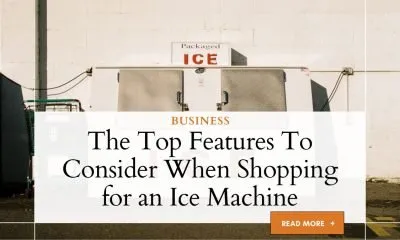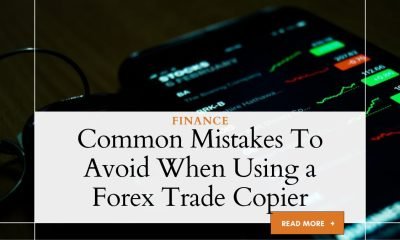
The allure of credit cards is undeniable. They offer the promise of freedom, the allure of endless possibilities, and the convenience of a cashless society.
However, what many people don’t realize is that this convenience comes at a cost—often a steep one.
The hidden fees, the psychological tricks, and the ease of use can all conspire to make you spend more than you intended.
This article aims to shed light on these hidden costs, helping you make more informed financial decisions.
Also, you can able to know,
Why Credit Cards Can Be a Double-Edged Sword
Credit cards are a financial tool that can serve as both a boon and a bane. On one hand, they offer unparalleled convenience, allowing you to make purchases even when you don’t have immediate access to cash.
On the other hand, they come with a host of hidden costs and pitfalls that can trap the unwary consumer in a cycle of debt.
From high-interest rates to hidden fees, the costs can quickly add up, turning your financial dream into a nightmare.
Unveiling the Hidden Traps of Credit Card Spending
In this comprehensive article, we will delve into the multifaceted ways that credit cards can lead you to spend more money than you may have initially realized.
From the psychological aspects that make spending easier, to the hidden fees that accumulate over time, we’ll provide a panoramic view of the potential pitfalls.
By the end, you’ll have a better understanding of how to use credit cards wisely, ensuring they are a tool for financial freedom, not a shackle of debt.
What Are All The Ways You Spend More Money When You Pay with a Credit Card?
In today’s digital age, credit cards offer unparalleled convenience, but do you ever stop to consider the hidden costs?
Our comprehensive guide dives deep into this pressing question: “What are all the ways you spend more money when you pay with a credit card?”
From the psychological factors that make swiping so easy to the hidden fees that can accumulate without notice, we’ll uncover the various pitfalls that could be silently draining your finances.
1. The Psychology Behind Credit Cards
In this section, we delve into the psychological aspects that make credit cards so enticing yet potentially dangerous.
From the illusion of “free money” to the emotional detachment that comes with swiping a card, we’ll explore how these psychological factors can lead to increased spending and financial risk.
The Illusion of Free Money
When you swipe a credit card, it’s easy to fall into the trap of thinking that you’re not actually spending money.
This illusion is a psychological trick that many fall prey to. The act of swiping a card lacks the tangible weight of handing over cash, making it feel less “real.”
This cognitive dissonance can lead to overspending, as you may not fully process the financial implications of your actions until the bill arrives.
Emotional Detachment: Why Swiping is Easier than Handing Over Cash
The act of handing over physical cash creates a moment of pause, a tangible transaction that makes you think twice about your spending.
Credit cards eliminate this emotional checkpoint. The swipe or tap is so effortless that it doesn’t give you time to reconsider.
This emotional detachment from the actual act of spending money can lead to more frivolous purchases, as the psychological barriers that usually keep our spending in check are bypassed.
The Buy Now, Worry Later Mentality
Credit cards inherently promote a culture of immediate gratification. The “buy now, worry later” mentality is especially dangerous because it postpones the financial reckoning to a future date.
This delay can make it easy to rack up debt, as you continue to spend without immediately feeling the financial pinch.
By the time the bill arrives, you’re left grappling with a mountain of debt that you didn’t anticipate.
2. The Convenience Factor
Here, we examine the double-edged sword of convenience that credit cards offer.
While they make transactions effortless and quick, this very ease can lead to overspending and financial pitfalls.
We’ll look at how modern technologies like one-click shopping and auto-renewals can drain your wallet without you even realizing it.
One-Click Shopping: A Blessing or a Curse?
The rise of e-commerce has been meteoric, and one-click shopping is at the forefront of this revolution.
While the convenience is unparalleled, it’s also a double-edged sword.
The ease with which you can make a purchase, often without even entering your card details, removes several layers of decision-making that would otherwise give you pause.
This can lead to impulsive buying and a gradual accumulation of unnecessary items, all because the barriers to purchase have been all but eliminated.
How Auto-Renewals Drain Your Wallet
Auto-renewals for subscriptions are a modern convenience that can quickly turn into a financial drain.
These automatic payments are easy to forget, leading to “zombie subscriptions” that may go unused but continue to siphon money from your account.
The insidious part is that you may not even realize how much you’re spending until you scrutinize your monthly statement.
By then, you’ve already lost money on services you didn’t use, and the cycle is likely to continue unless you take proactive steps to cancel these subscriptions.
The Temptation of Contactless Payments
Contactless payments, whether through a card tap or a mobile app, are the epitome of convenience.
However, this ease can be your financial undoing. The speed and simplicity of contactless payments make it easier to make thoughtless purchases.
You’re less likely to reconsider a purchase when all it takes is a simple tap.
This can lead to a series of small, unplanned purchases that, when added up, constitute a significant financial outlay.
3. Interest Rates: The Silent Money Eater
Interest rates are often overlooked when using credit cards, but they can be one of the most costly aspects.
In this section, we’ll demystify the concept of APR and discuss how making only minimum payments can keep you in a perpetual cycle of debt.
Understanding APR: What Does It Really Mean?
APR, or Annual Percentage Rate, is a term that many credit card users encounter but few truly understand.
It’s the cost of borrowing money on your credit card, expressed as a yearly rate.
While it might seem like a small percentage, the APR can quickly accumulate, especially if you’re only making minimum payments.
This silent money eater can turn a manageable debt into an insurmountable one, as the interest compounds over time, adding to your original debt and creating a cycle that can be difficult to break.
How Minimum Payments Keep You in Debt
The allure of making minimum payments on your credit card is strong.
It gives the illusion that you’re managing your debt responsibly, but in reality, it’s a financial quagmire.
Minimum payments are designed to cover the interest and only a tiny portion of the principal amount.
This means that your debt hardly decreases, and you find yourself mired in a cycle of perpetual payments that do little to eliminate your actual debt.
Over time, this can lead to a significant financial burden that could have been avoided with higher payments.
The Snowball Effect: When Interest Compounds Interest
Compound interest is a powerful financial concept that works wonderfully when you’re saving or investing.
However, when it comes to credit card debt, it’s your worst enemy.
Interest on your unpaid balance compounds, meaning you’re essentially paying interest on your interest.
This snowball effect can quickly escalate your debt to unmanageable levels, making it increasingly difficult to regain financial stability.
The longer you take to pay off your balance, the more you’ll end up paying in the long run.
4. The Allure of Rewards and Cash Back
Rewards and cash-back offers can make credit cards seem incredibly appealing. However, the reality is often more complex.
This section will dissect the psychology behind these reward systems and reveal why the math doesn’t always work in your favor.
The Psychology of Earning While Spending
Credit card rewards programs are a masterstroke of psychological marketing.
They create an illusion that you’re actually earning money or points while you spend, making you feel savvy rather than spendthrift. However, the reality is often less rosy.
These rewards often come with strings attached, like high interest rates or annual fees that can quickly negate any benefits you might have accrued
Moreover, the quest for rewards can lead to unnecessary spending, as you strive to hit certain thresholds to earn points or cash back.
Why the Math Doesn’t Always Add Up
At first glance, earning rewards or cash back on your credit card spending seems like a win-win situation.
However, when you delve into the mathematics of these programs, the picture often becomes less appealing.
The value of the rewards rarely compensates for the high-interest rates and potential fees you might incur.
For example, a 2% cash-back reward loses its luster when you’re paying 18% or more in interest.
It’s crucial to scrutinize the fine print and do the math to ensure that you’re actually coming out ahead.
The Hidden Costs of Chasing Rewards
The pursuit of credit card rewards can be an expensive endeavor.
Many people find themselves making unnecessary purchases just to hit a spending target or earn extra points.
This behavior not only leads to overspending but also to accumulating items or services you don’t really need.
Additionally, some credit cards charge high annual fees that are only justified if you earn enough rewards, creating another financial pitfall.
The bottom line is that chasing rewards can often cost you more than you stand to gain.
5. Credit Card Fees: More Than Just Annual Fees
Fees are an often underestimated component of credit card use.
Beyond the obvious annual fees, there are a variety of other charges that can catch you off guard.
This section aims to shed light on these hidden fees and how they can impact your overall financial health.
Late Payment Fees: A Slippery Slope
Late payment fees are more than just a one-time financial penalty; they can set off a cascade of negative consequences.
A single late payment can trigger increased interest rates, not just on your current card but potentially on other credit accounts as well.
This can turn a small oversight into a costly mistake that reverberates through your financial life.
Moreover, late payments can negatively impact your credit score, making future borrowing more expensive and potentially affecting your ability to secure loans or even housing.
Foreign Transaction Fees: The Unseen Travel Expense
When you’re traveling abroad, it’s easy to overlook the additional costs associated with foreign transactions on your credit card.
These fees can range from 1% to 3% of each transaction, and they quickly add up.
What might seem like a minor inconvenience can turn into a significant financial burden, especially if you’re making large purchases or staying abroad for an extended period.
These fees are often overlooked when budgeting for a trip, leading to an unpleasant financial surprise when you return home.
Balance Transfer Fees: The Cost of Shifting Debt
Transferring your credit card balance to a card with a lower interest rate can seem like a savvy financial move.
However, what many people fail to consider are the balance transfer fees, which can range from 3% to 5% of the transferred amount.
These fees can significantly offset the benefits of a lower interest rate, especially if you’re transferring a large balance.
It’s crucial to factor in these fees when calculating the potential benefits of a balance transfer to ensure it’s a financially sound decision.
6. The Impact on Your Credit Score
Your credit score is a vital aspect of your financial health, and credit card usage plays a significant role in it.
This section will explore how overspending and other risky behaviors can negatively impact your credit score, affecting your future financial opportunities.
How Overspending Affects Your Credit Health
Overspending on your credit card does more than just rack up debt; it can also have a detrimental impact on your credit score.
High credit utilization, which is the ratio of your credit card balance to your credit limit, is a red flag to lenders and can significantly lower your credit score.
This, in turn, affects your ability to secure loans, mortgages, or even rental agreements in the future.
A lower credit score can result in higher interest rates, which translates to higher costs over the life of a loan.
The Risk of Maxing Out Your Credit Card
Maxing out your credit card is a perilous financial move that has far-reaching implications.
Not only does it significantly increase your debt, but it also sends a signal to lenders that you may be a high-risk borrower.
This can lead to increased interest rates on your current card and potentially on other lines of credit.
The long-term impact on your financial health can be severe, affecting everything from your ability to secure a mortgage to the interest rates on future loans.
The Long-Term Costs of a Lower Credit Score
A lower credit score is not just a temporary setback; it can have long-lasting financial repercussions.
Higher interest rates on loans and credit cards are just the tip of the iceberg.
A low credit score can also affect your ability to rent an apartment, secure a job in certain industries, or even obtain insurance at a reasonable rate.
Over time, these increased costs can add up to thousands of dollars, making it imperative to maintain a healthy credit score.
7. Impulse Buying: A Credit Card’s Best Friend
Impulse buying is a behavior that credit cards can easily facilitate.
In this section, we’ll delve into the psychology of instant gratification and how retailers capitalize on credit card use to encourage impulse buying, leading to a cycle of debt.
The Role of Instant Gratification
The desire for instant gratification is a fundamental human trait, and credit cards are perfectly designed to exploit this.
The ease and speed of a credit card transaction feed our impulsive nature, allowing us to obtain what we want immediately, without the delay of saving or planning.
This can lead to a series of unplanned, impulsive purchases that may provide a momentary sense of satisfaction but ultimately contribute to mounting debt and financial instability.
How Retailers Capitalize on Credit Card Use
Retailers are acutely aware of the psychology behind credit card use and have developed strategies to capitalize on it.
From “Buy Now, Pay Later” schemes to exclusive discounts for credit card users, these tactics are designed to encourage higher spending.
The immediate pleasure of acquiring new items often overshadows the long-term financial implications, leading to increased spending and, consequently, higher levels of debt.
The Dangers of Retail Therapy
The concept of “retail therapy” is a socially accepted form of emotional relief through shopping.
While it may offer a temporary emotional lift, it often leads to a cycle of debt, especially when facilitated by the ease of credit card use.
The emotional highs are fleeting, but the financial consequences can be long-lasting, creating a vicious cycle that can be difficult to break.
8. Subscription Services: A Modern Money Pit
Subscription services have become a staple in modern life, but they can also be a financial drain
This section will discuss how the convenience of “set it and forget it” payments can lead to “zombie subscriptions” that siphon money from your account.
How Free Trials Become Paid Subscriptions
Free trials are a common tactic used by subscription services to attract new users.
While they offer a risk-free way to try a service, they often automatically convert into paid subscriptions.
Many people forget to cancel before the trial period ends, leading to unexpected charges.
These “accidental subscriptions” can add up over time, creating a modern-day money pit that drains your finances.
The Set It and Forget It Trap
Subscription services often employ a “set it and forget it” model, where payments are automatically deducted from your account.
While convenient, this model can lead to complacency. You may continue to pay for services you no longer use or need, simply because you’ve forgotten about them.
These “zombie subscriptions” can accumulate, siphoning off a significant portion of your income over time.
Unsubscribing: Easier Said Than Done
While signing up for a subscription is often a straightforward process, unsubscribing can be a different story.
Some services make it notoriously difficult to cancel, requiring multiple steps or even phone calls to customer service.
This creates a barrier to cancellation, leading many people to continue paying for services they no longer want or need.
9. The FOMO Effect
The Fear of Missing Out, or FOMO, is a powerful driver of spending behavior.
This section will explore how limited-time offers and social media can fuel this psychological phenomenon, leading to increased credit card spending and financial instability.
Limited-Time Offers: Creating a Sense of Urgency
Limited-time offers are a marketing tactic designed to create a sense of urgency and trigger FOMO (Fear of Missing Out).
These offers encourage impulsive spending by creating an artificial deadline after which a deal or discount will no longer be available.
The pressure to act quickly can lead to rash financial decisions, as the fear of missing out overshadows rational judgment.
How Social Media Fuels Credit Card Spending
Social media platforms are a hotbed for FOMO, showcasing curated lives that can make us feel inadequate by comparison.
This can trigger emotional spending as people try to “keep up with the Joneses” by making purchases they may not actually need or be able to afford.
The ease of credit card spending facilitates this behavior, leading to increased debt and financial instability.
The Cost of Keeping Up with the Joneses
The societal pressure to maintain a certain lifestyle or image can be a significant driver of credit card spending.
The desire to “fit in” or “keep up” can lead to purchases that are beyond your financial means, resulting in a cycle of debt that can be difficult to escape.
The long-term costs of this behavior can be devastating, affecting not just your financial health but also your emotional well-being.
10. How to Break the Cycle
Finally, we’ll discuss actionable steps to break the cycle of credit card overspending.
From budgeting strategies to setting up spending alerts, this section will provide practical advice to help you regain control of your financial life.
Budgeting Strategies for Credit Card Users
Breaking the cycle of credit card overspending starts with a well-thought-out budget.
A budget serves as a financial roadmap, helping you allocate your income to various expenses and savings goals.
By categorizing your spending and setting limits, you can gain better control over your finances.
This proactive approach allows you to use your credit card wisely, reaping the benefits of convenience without falling into the trap of debt.
The Envelope System: A Digital Twist on an Old Classic
The envelope system is a time-tested budgeting method that involves allocating cash to different spending categories.
In today’s digital age, this can be adapted to credit card use through specialized apps or even manual tracking.
By setting spending limits for different categories and tracking your expenses, you can avoid the pitfalls of overspending.
This modern twist on an old classic offers a disciplined approach to credit card use, helping you maintain financial stability.
Setting Up Alerts: Your Personal Financial Watchdog
Many credit card companies offer the option to set up spending alerts that notify you when you’re nearing your budget limit or when an unusually large transaction occurs.
These alerts serve as a financial watchdog, helping you stay on top of your spending and avoid unexpected debt.
By customizing these alerts to fit your budget and spending habits, you can add an extra layer of financial security, making it easier to use your credit card responsibly.
Don’t miss: Expense Card for Contract Employees, Streamlining Expense Management
The bottom line
In this comprehensive guide, we’ve explored the multifaceted question: “What are all the ways you spend more money when you pay with a credit card?”
From the psychological tricks that make swiping that plastic so appealing to the hidden fees that accumulate without you even realizing, it’s clear that the convenience of credit cards often comes at a steep price.
We’ve also delved into how modern technologies and societal pressures can fuel this cycle of overspending, affecting not just your current financial status but also your long-term financial health and opportunities.
While credit cards offer undeniable advantages, such as the ability to build credit and the convenience of cashless transactions, it’s crucial to use them wisely.
By being aware of the various pitfalls and taking proactive steps to avoid them, you can turn your credit card into a tool for financial freedom rather than a shackle of debt.
Whether it’s through disciplined budgeting, setting up spending alerts, or simply being more mindful of your spending behaviors, the key is to be proactive rather than reactive.
So, the next time you reach for that credit card, remember to consider all the ways you could end up spending more than you intend.
With the right strategies and awareness, you can enjoy the benefits of credit cards without falling into the financial traps they often set.














